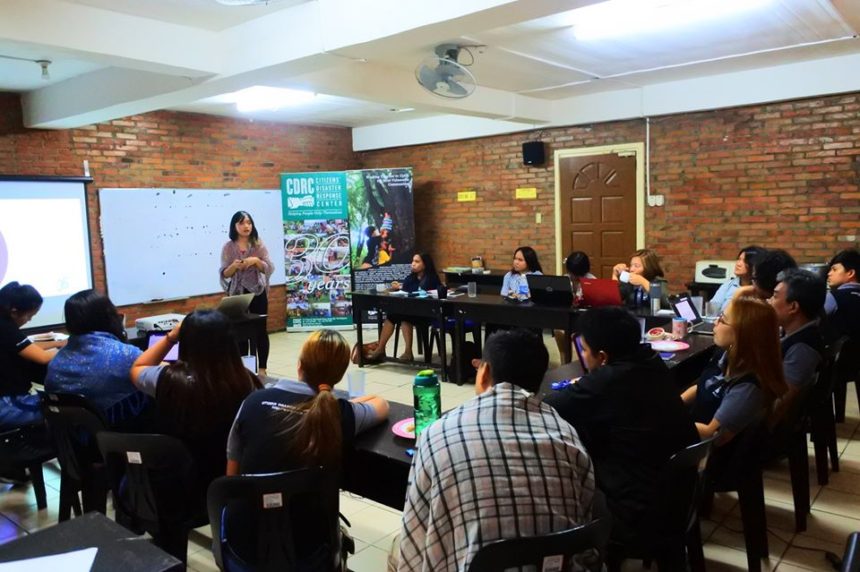CDRC, a humanitarian organization, provides an in-house capacity building to its staff on September 11-12, 2019 at CDRC Conference Room to fully equip them on how to become effective development workers and respond efficiently to the call of serving the most vulnerable sectors affected by disasters.
With the increasing demand for disaster response all throughout the country, humanitarian and development workers must be well-informed and well-guided of humanitarian principles in delivering services. Moreover, development workers must be capacitated in any form to help them understand their nature of work.
With the initiative of the Office of the Executive Director, a two-day capacity building activity is held and all staff of CDRC are enjoined to participate in this activity. Speakers are Ms. Kim Augiline Leduna, Executive Director, Mr. Mikhail Valle, Deputy Executive Director, Ms. Ma. Elena Serato, Coordinator of Field Operations Department and Ms. Maria Teresa Quinawayan, Coordinator of Training Department. With their respective expertise on humanitarian work, they have shared various topics relating to the tasks and duties of development workers in accordance with the Core Humanitarian Standards. CDRC staff are also participative in sharing their personal experiences and providing inputs on the updating of the Emergency Preparedness and Response Plan, Emergency Protocol and Communication Plan and Damage Needs and Capacities Assessment.
During the activity, common problems encountered by the staff during disaster response are also addressed. The Management Committee would like to ensure that staff are illuminated with practical information and knowledge on humanitarian work before going down to the served-communities to avoid conflicts while implementing DRRM activities.
This activity aimed to provide participants awareness of the Nine Commitments and Quality Criteria of CHS, Ethics, Codes and Policies, familiarization of the DNCA form, and to help in updating the Emergency Preparedness and Response Plan. #####

